Out of the corner of your vision, you spot a bird suspended in the air above a field, like a kite on a string. When you take a closer look, you see a falcon that seems to float effortlessly. However, this hovering hunter is constantly working to defy gravity – harnessing or creating lift and using complex movements to adjust its position and stabilise itself. It can also do all this while keeping its head perfectly still, to ensure its vision isn’t compromised. The kestrel may be a common bird of prey in the UK, but seeing it at work will always be an exceptional experience.
The windhover
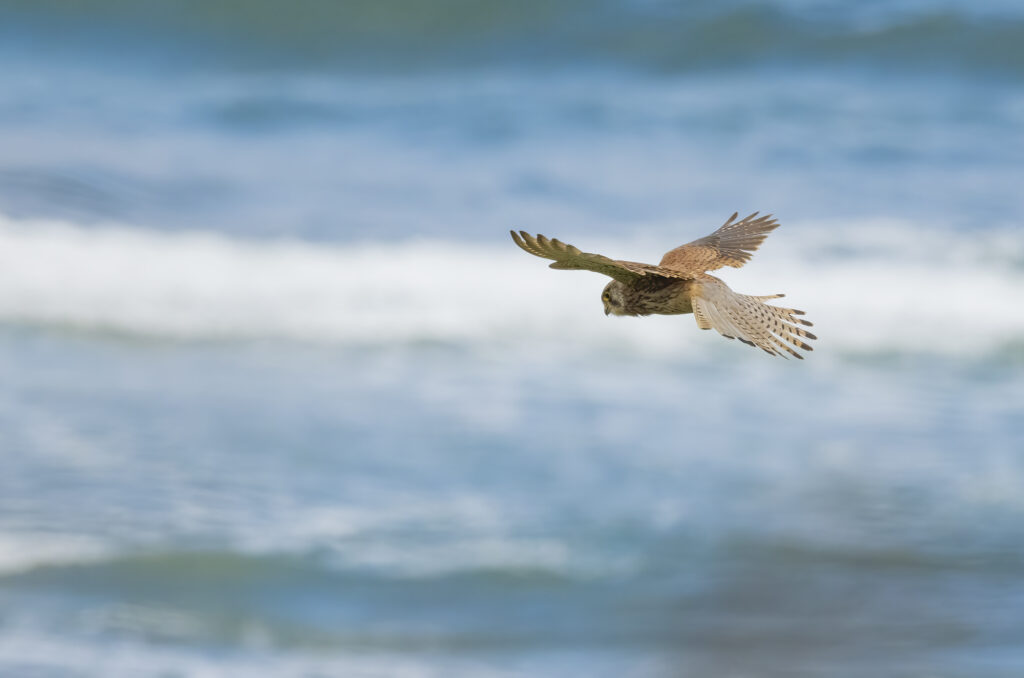
Kestrels spend much of their time hover-hunting, as described above. Their ability to keep their heads still when they hover, to keep watch on their prey, gave them the old country name of the ‘windhover’. In his brilliant book A Bad Birdwatcher’s Companion, Simon Barnes says that “In still air, it can hang, as if attached to the sky by a thread, with frenziedly delicate flutterings of its sharply angled wings”.
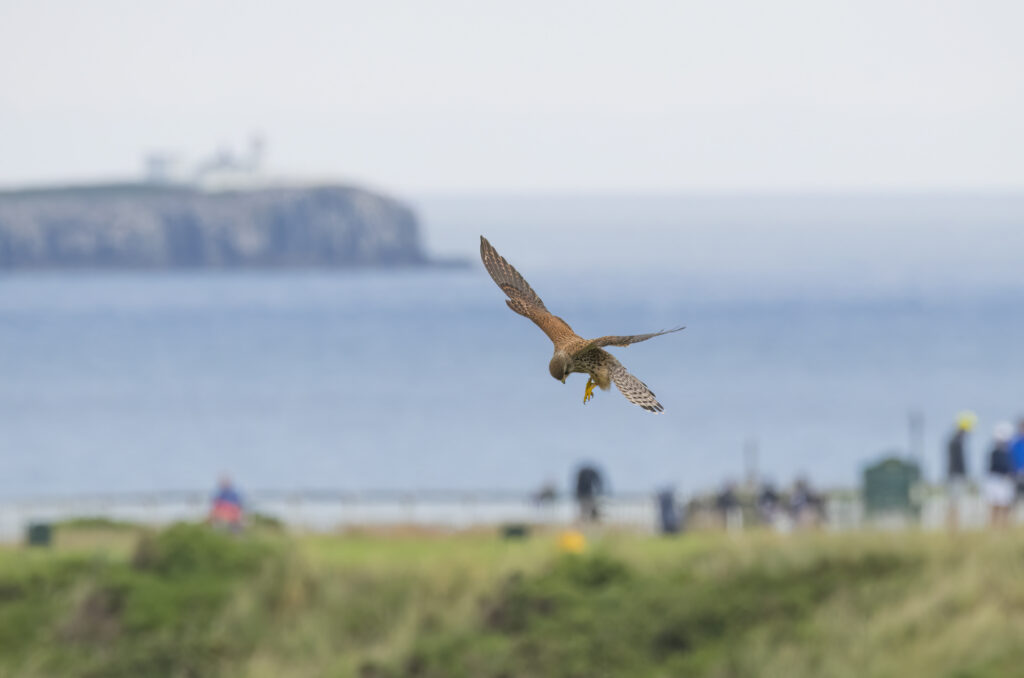
It was this delicate fluttering that my partner spotted as we walked along the Northumberland Coast Path. On a section alongside the Bamburgh Castle Golf Course, we saw the pair of kestrels hunting above the grass and vegetation between the course and the beach. I held my breath as I made my way steadily towards the hovering birds. I was convinced that if I relaxed for a second, they would be gone, but I also felt the need to get closer to ensure the birds would be large enough in the frame. I needn’t have worried. This pair were accustomed to people wandering along the path and golfers on the course, and remained focused on their dinner. Our elevated spot enabled me to capture images of the kestrels from a different perspective – as though I was hovering too, rather than looking up at them like a mouse.
Perched to pounce
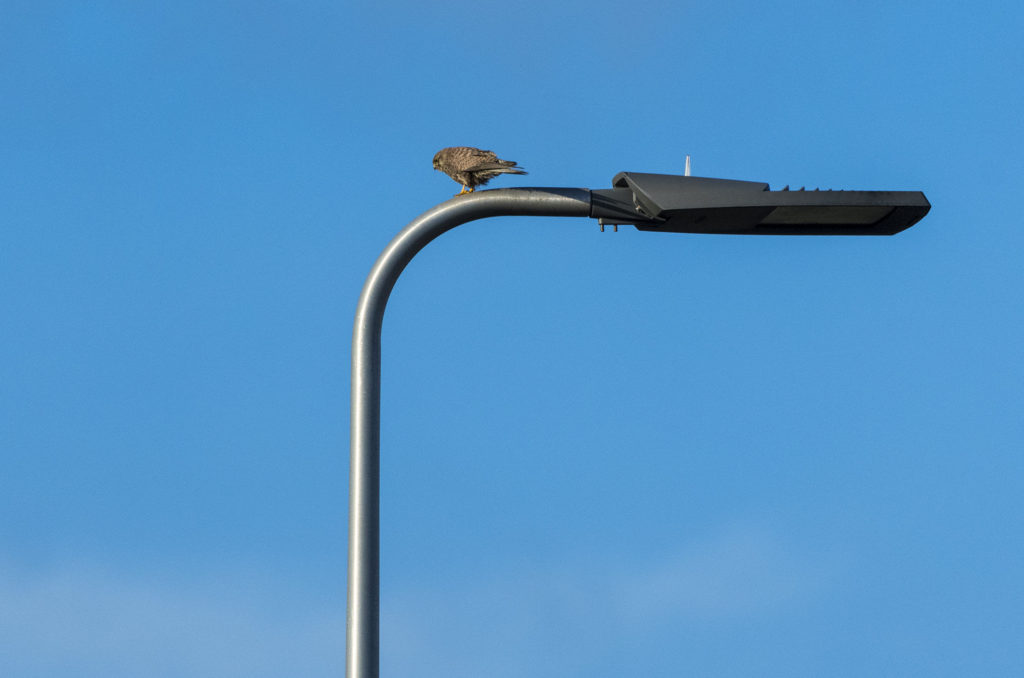
While they are known for their hovering hunting technique, kestrels will also hunt from perches. Their use of trees, posts and even motorway signs and lights depends on the prey they are trying to catch, the weather conditions and how much energy they can afford to expend. They have also learned to adapt to human interference and have been known to wait for farming activity to flush prey for them.
Human interference may not always be helpful though, and while kestrels do remain easy to spot as a widespread species in the UK, the population has fallen by half since 1970. Possible reasons for this decline over the years include changes in farming practices, secondary poisoning (eating poison meant for rats), loss of nesting sites in old trees and persecution.
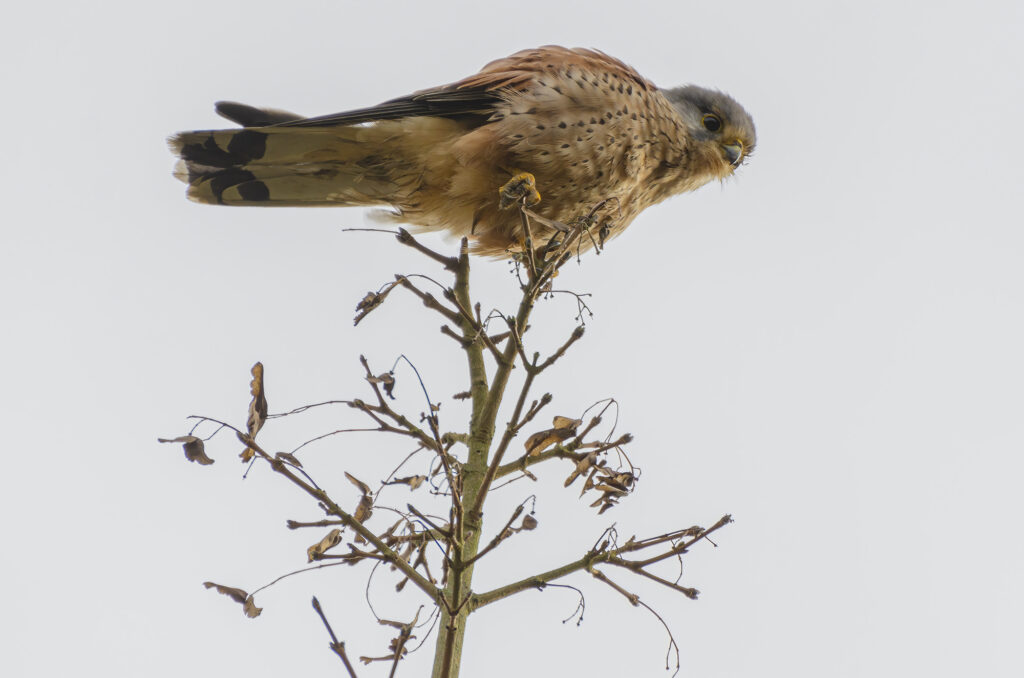
The image above must replicate the last face a mouse sees when it looks up. Death is sure to follow. This kestrel encounter was a ‘wildlife from my window’ moment from 2015. In fact, it was a wildlife from my dad’s car window moment! We were pulling into the car park at the RSPB’s Fowlmere nature reserve when I spotted this kestrel perched at the top of a tree. It was quite a windy day, and this bird was getting buffeted by the breeze and looked like it would take to the air at any moment. My dad stopped the car so I could wind down the window and poke my lens out but we were blocking the entrance. If the kestrel didn’t fly away, we would probably have to move for another car. So, I fired off a few shots without having time to check my settings. I was shooting up at the tree with a flat and featureless sky behind the bird. The images captured in those few moments weren’t great – the kestrel was too dark, the angle was too harsh, and the sky was too pale. I didn’t like them but kept them on my hard drive anyway. I have since revisited the images I captured and edited them in Lightroom a couple of times and I am pleased with the results.
Timed to perfection
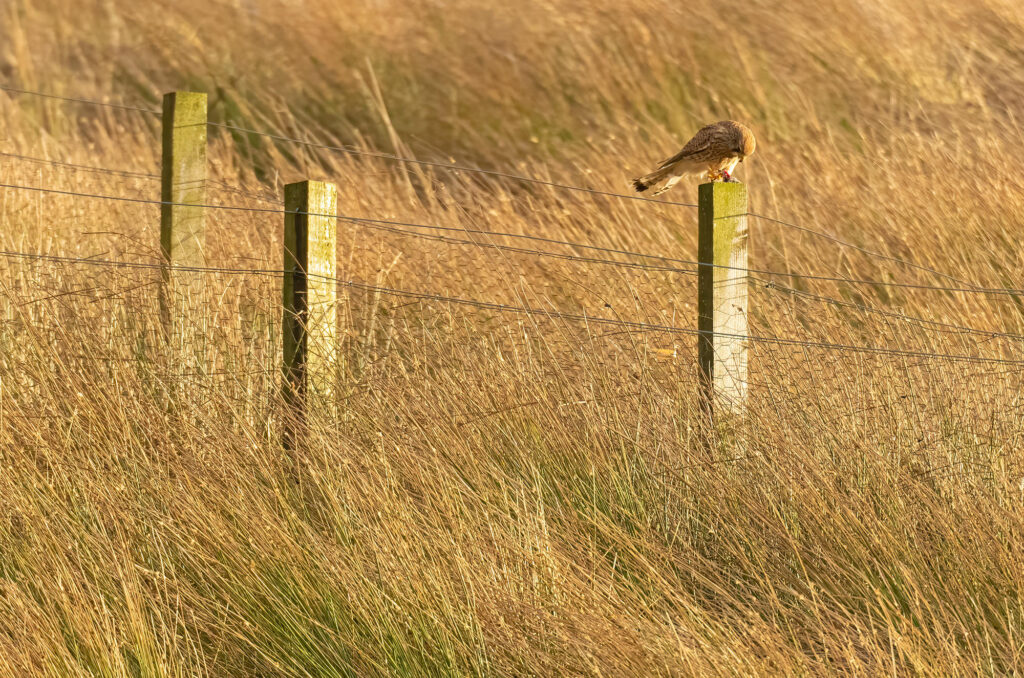
The image above is a female kestrel tucking into what I think was a mouse. By this point in the proceedings the victim didn’t seem to have a head, so it was a bit difficult to tell. Apologies if you have just had your dinner. These birds need to have incredible timing to catch their prey, and timing can help when you are looking for an opportunity to photograph kestrels hunting.
If you can only grab an hour or two with your camera on the weekend, it can be pretty frustrating when you get to Friday night and the weather forecast is appalling. The image above was captured when the weather in Glasgow had been atrocious – storm after storm rolling in with gale-force gusts and pouring rain, sleet and snow. Between all that there were some sunnier spells where the wind dropped. And that’s when – like the kestrel – I pounced.
The image of the successful hunt was captured in the late afternoon. I checked the forecast, and it looked like we would have a couple of hours respite. I knew I wouldn’t be the only one hungry to get out. We headed straight to a local location good for kestrels and buzzards, because I calculated that they would be taking the opportunity to hunt during the quieter weather. I was, happily, proved right. Although the buzzards stayed in the distance, getting mercilessly mobbed by carrion crows, this kestrel was on the hunt much closer to us, and I managed to capture a couple of images of her with her catch.
So, if you are keen to capture kestrels doing what they do best, I recommend timing your trip out with your camera when you think they will be most active and easiest to spot.
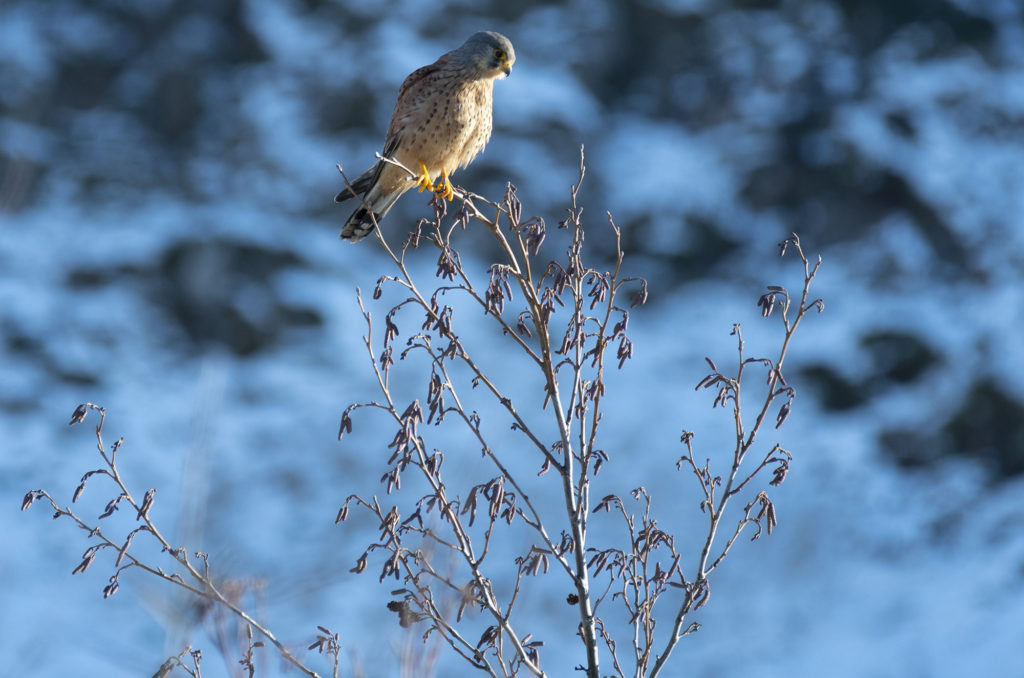
The kestrel is a stunning and remarkable raptor, but its hovering and perching hunting techniques make it a predictable subject and the perfect predator to point your lens at.

